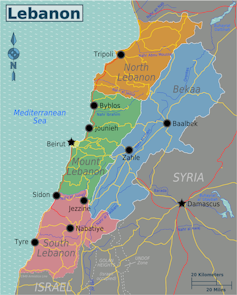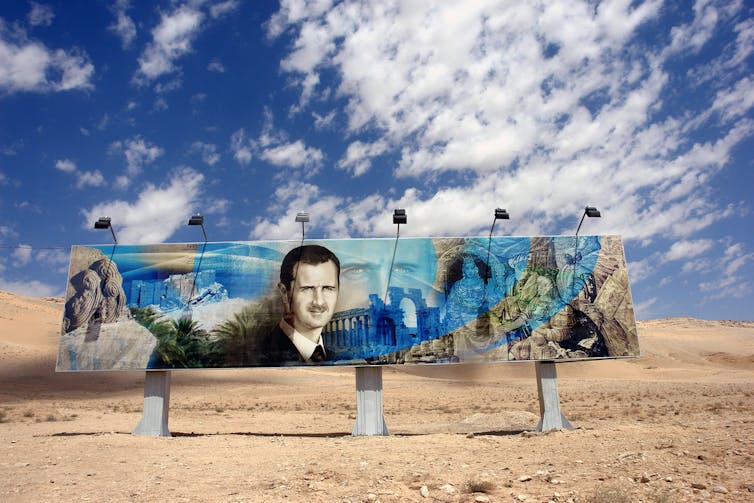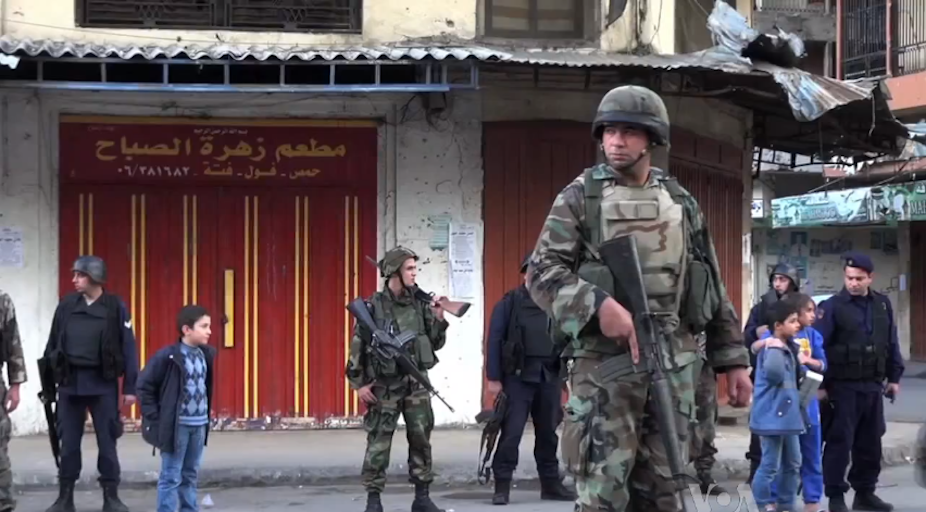The fighting that has engulfed the Lebanese city of Sidon over the past week, leaving at least 15 soldiers dead and more than 70 injured, has raised tension across the country. The clashes come on the back of growing sporadic violence in Lebanon; each incident cracking the veneer of its separation from the civil war in Syria.
Two weeks ago, Syrian rebels fired rockets into the Lebanese Shia town of Hermel, while during the same period Syrian helicopters crossed into nearby Arsal, firing into buildings. At the beginning of June, Hezbollah openly admitted that it has been fighting on the side of president Bashar al-Assad. Hezbollah is said to have been instrumental in the Syrian army’s regaining balance of power and particularly the key town of Qusair – a strategic route used by the rebels to send weapons through to Homs, itself a key transit to the rest of Syria. The rebel attacks on Shia towns in Lebanon, can be seen as a response to Hezbollah’s open involvement in Syria.
War in Lebanon - business as usual
Lebanon is a country with a remarkable capacity to absorb tension quickly and appear to carry on the business of life as normal in the face of ongoing political dysfunction against a background of continuous existential crises. This is the gift of a 15-year war, and of multiple military incursions over the country’s history. One becomes accustomed to living in the shadow of certain unresolved legacies of violence and the perception of competing existential threats among many of the Lebanese communities.

As a result, post-war Lebanese history is a case of conflict management as a moving target. Over the last eight years, the country has survived the assassination of a former prime minister in 2005 as well as a number of politicians, intellectuals and journalists, the “Cedar Revolution” and Syria’s withdrawal, a devastating one-month full-scale war between Israel and Hezbollah in 2006, and internal violence between Hezbollah and government supporters in 2008, which sparked fear of a new war in Lebanon.
The beginning of what is popularly called the Arab Spring in 2011 was viewed both warily and with envy in Lebanon, but the main question from inside was its impact on regional and domestic dynamics. What happens in the region is always reflected in Lebanon, where Saudi Arabia supports Lebanese Sunni political alliances and where Iran and Syria support the Lebanese Shia political groups.
So when protests in Syria two years ago spread through the country, there was concern that things were unlikely to remain calm in Lebanon. Over the course of 2011, kidnappings of Syrian nationals from Lebanese territory began. In May 2012, 11 Lebanese men were kidnapped on their return from pilgrimage in Aazaz, Syria, and nine remain missing. Tension rose again as Hezbollah, the Lebanese government, and Turkey tried to get them back.
While incidents of violence occurred throughout the country as a response, things calmed quickly. Then in October 2012, the head of Lebanese intelligence, involved in investigating the Hariri assassination and the role of Hezbollah in political violence in Lebanon, was assassinated in a car bomb in Beirut. Up to now things have followed the established Lebanese pattern of spark and settle, spark and settle.
But after each event, tension rises just that little more, tempers are shorter, seemingly unrelated incidents take longer to diffuse, and people are more on edge.
The exception to this rule of violence and calm is the northern Lebanese city of Tripoli, a site of continuous border skirmishes and shootings, fighting between Alawites and anti-Assad groups, and the constant flows of Syrian refugees adding to the fragmentation. In Tripoli, hundreds have been killed and continue to be, and hundreds more injured.
While for the present it is in the interest of local and international power players to keep Lebanon calm, there are a number of important factors that will continue to trigger these ongoing cycles of violence and stillness.
Uneasy marriage of inconvenience
Lebanon’s political existence is founded on a grudging power-sharing agreement between the main sectarian communities. Each, however, believes that its strength is not fairly represented in the political machinery, which is frequently paralysed. At the moment, there is a caretaker government in power, a new prime minister has been nominated to form a cabinet but has been unable to do so, and for the first time since the Lebanese war’s end more than 20 years ago, elections that were due to take place in June have been postponed to November, partly in reaction to the escalating tension, but partly also feeding that tension. Parliament has extended its mandate, and MPs have failed to meet constitutional deadlines to agree on a new electoral law.

This exists as the top layer in a complex pyramid of ongoing domestic difficulties. The bottom layer, which feeds into everything else, is the constant sense of threat each community feels. Broadly speaking, the Christian community feels engulfed and persecuted, the Sunni unrecognized, and the Shia that their dominance is being challenged and repressed. Everyone, then, is hyper-sensitive to demographic, political, and economic fluctuations both in the country and in the region.
It has long been speculated that the next war in Lebanon will not be Christian-Muslim, or Left-Right, but Sunni-Shia. This is not unique to Lebanon, but reflective of broader lines of tension in the region. Syria’s civil war has tapped into this fear. The Syrian conflict has clocked up 1.5 million refugees, a million of them in Lebanon, and 100,000 deaths. The majority of Syrian refugees in Lebanon are Sunni Muslim, triggering Christian fears of engulfment, and Shia fears of a change in power dynamics. This tension is being reflected throughout the country as Sunnis move away from Shia areas and threats of tit-for-tat violence become actualised.
Escalating this tension further, Hezbollah feels it must throw all its weight into Syria. If Assad falls, the organisation’s major regional protector is gone, and weakens it both politically and militarily in Lebanon and vis-à-vis the region. On top of this is layered the widespread perception that Syrian refugees are leeching resources away from the Lebanese, bringing an unwanted economic, political, and social strain into the country.
At the same time, the Lebanese government has declared a policy of “disassociation” from the Syrian conflict: that is, it will not get involved.
But with the recent events, that separation has begun to collapse. It is clear that different Lebanese factions are fighting with both the Syrian army and the Syrian opposition, and are fighting each other within those broader battles. And since the Syrian civil war shows no signs of resolution and it is unclear when or if Assad will fall, more refugees will pour into the country, Lebanese militias will continue fighting in Syria, the Syrian army and opposition will continue to retaliate on Lebanese soil.
The Lebanese state, in its weakened position, is unable to absorb these tensions. Blowback into Lebanon is becoming evident, in the shape of recent events in Sidon – where the clashes took place between supporters of Sunni Sheikh Ahmad al-Assir and the Lebanese Army – and the Bekaa valley.

All of this will continue to trigger inter-communal insecurities, which will feed the above conflicts and perpetuate the domestic political paralysis. Escalation in Lebanon therefore appears unavoidable. What is not so clear is whether it will result in a full conflict, and the broader implications of this possibility.
High stakes for the whole region
Zooming out, what is happening in Lebanon and Syria exists within an Arab world that is struggling with two deeply interrelated questions: how will the deepening Shia-Sunni tension across the region play out, and what direction will the Arab Spring take?
The costs of a Lebanon collapse are extremely high for the region, and it appears that while their role in the region is far from benevolent, the US and EU are among those putting in a great deal of effort to stop the country from exploding completely. John Kerry’s recent visit to Israel may have also been a message to the Israelis to stay away from Lebanon, and try to keep out of Syria. This, of course, sits in contrast to how the Syrian civil war itself has been handled by those same players, as well as Russia and China. Ironically, Israel itself may prefer an Assad government to the alternative.
While it may be in Assad’s interest to have a full-blown Lebanese conflict on his border, there are serious implications for the rest of the region. If Lebanon falls, it will accompany Iraq and Syria as collapsed states and the region will have to think about three significant sectarian conflicts. Yemen and Libya are in disarray, Egypt is deeply unsteady, Bahrain is unstable and Tunisia, the flagship of the emerging MENA democracies, is fighting its own battles.
The Lebanese conflict, then has the potential not only to tip the scales of sectarian conflict in the MENA region, but also to tip the balance of hope regarding democratisation in the neighbourhood. The question is whether there is enough collective will among the relevant domestic and inernational actors to avoid conflict in Lebanon, and at what point that interest might shift.

